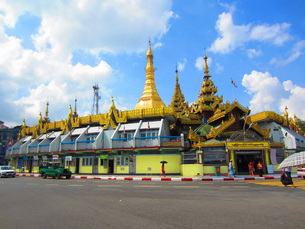
Sule Pagoda
Tourism in Myanmar is picking up due to the fact that the country's military dictatorship recently began opening the country up to the rest of the world. Still, this was one of the most untouched countries Joe and I have visited. The kitchy, touristy materialism we have been bombarded with in other countries hasn't taken hold here yet. It was refreshing and certainly an amazing opportunity to visit a country that hasn't yet been influenced by the rest of the world. I felt we got a true taste of what life is like in Myanmar.
Myanmar has been the focus for Joe at work as he is developing a strategy for new market entry into the country for BASF's crop protection products. I tagged along with him for his second business trip to Myanmar. Since all of Joe's meetings were in Yangon (Myanmar's capital), we stayed in this city the entire time. I'll admit, there isn't really that much to see in Yangon and I wish we would have had more time to explore other parts of the country. However, we made the most of our time there and visited some pretty amazing sites... including one that includes a 76-carat diamond. Yes, that's right, 76 carats! More to come on this...
My first impression of Myanmar is that it's actually a lot more developed that I expected it would be. I can't really articulate what I expected, but the level of infrastructure was surprising. The airport in Yangon is very modern even if it is kind of small. Joe says there are plans to build a new, bigger airport which is going to be a necessity as tourism picks up. The level of tourism in Myanmar is already too much for the airport to handle. Heading into immigration, we faced a huge crowd and long lines to get into the country. The whole process was unorganized and took far too long. I'm sure a new airport will help remedy this.
Our drive to the hotel only took about 20 minutes. The scenery was varied with a mix of nice, new buildings that contrasted with smaller, worn down buildings. Overall, the roads were nicely paved and there was a lot of construction happening around the city. We also noticed the unique characteristics of the people of Myanmar. The men wear long, kilt-like garments called lungis in place of pants. The women typically wear clothes that cover their shoulders and knees, a more conservative look than what we've seen in some countries. This is actually something I researched so that I would bring along appropriate clothing as to not offend anyone. Women (along with children) also wear a type of sunscreen on their faces that is very distinctive. It's a white paste that is derived from some sort of tree that is painted in circles on the cheeks and is sometimes spread on the forehead as well. It almost looks as if people have vanilla icing on their faces.
Joe and I stayed at Traders Hotel in the heart of Yangon. Traders is one of only a handful of hotels in Yangon, and this lack of accommodation in the city is a problem. With the number of people visiting the country, the hotel rooms sell out quickly. I'm sure there are businessmen who are going to capitalize on this need and build more hotels. Traders is extremely nice and surprisingly expensive for a developing country, although the high demand and lack of supply helps drive the price up. The hotel is certainly a contrast to the surrounding area. From our room, I could see the run-down apartments that locals live in, making me feel very lucky to be staying in a nice room. Despite being in a luxury hotel, we had to be very careful not to accidentally ingest any water from the taps. This meant we had to brush our teeth with bottled water. The infrastructure in Myanmar isn't up to modern world standards, and many locals can't even stomach the water without getting sick.
Myanmar has been the focus for Joe at work as he is developing a strategy for new market entry into the country for BASF's crop protection products. I tagged along with him for his second business trip to Myanmar. Since all of Joe's meetings were in Yangon (Myanmar's capital), we stayed in this city the entire time. I'll admit, there isn't really that much to see in Yangon and I wish we would have had more time to explore other parts of the country. However, we made the most of our time there and visited some pretty amazing sites... including one that includes a 76-carat diamond. Yes, that's right, 76 carats! More to come on this...
My first impression of Myanmar is that it's actually a lot more developed that I expected it would be. I can't really articulate what I expected, but the level of infrastructure was surprising. The airport in Yangon is very modern even if it is kind of small. Joe says there are plans to build a new, bigger airport which is going to be a necessity as tourism picks up. The level of tourism in Myanmar is already too much for the airport to handle. Heading into immigration, we faced a huge crowd and long lines to get into the country. The whole process was unorganized and took far too long. I'm sure a new airport will help remedy this.
Our drive to the hotel only took about 20 minutes. The scenery was varied with a mix of nice, new buildings that contrasted with smaller, worn down buildings. Overall, the roads were nicely paved and there was a lot of construction happening around the city. We also noticed the unique characteristics of the people of Myanmar. The men wear long, kilt-like garments called lungis in place of pants. The women typically wear clothes that cover their shoulders and knees, a more conservative look than what we've seen in some countries. This is actually something I researched so that I would bring along appropriate clothing as to not offend anyone. Women (along with children) also wear a type of sunscreen on their faces that is very distinctive. It's a white paste that is derived from some sort of tree that is painted in circles on the cheeks and is sometimes spread on the forehead as well. It almost looks as if people have vanilla icing on their faces.
Joe and I stayed at Traders Hotel in the heart of Yangon. Traders is one of only a handful of hotels in Yangon, and this lack of accommodation in the city is a problem. With the number of people visiting the country, the hotel rooms sell out quickly. I'm sure there are businessmen who are going to capitalize on this need and build more hotels. Traders is extremely nice and surprisingly expensive for a developing country, although the high demand and lack of supply helps drive the price up. The hotel is certainly a contrast to the surrounding area. From our room, I could see the run-down apartments that locals live in, making me feel very lucky to be staying in a nice room. Despite being in a luxury hotel, we had to be very careful not to accidentally ingest any water from the taps. This meant we had to brush our teeth with bottled water. The infrastructure in Myanmar isn't up to modern world standards, and many locals can't even stomach the water without getting sick.
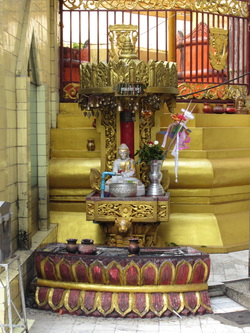
Tiger shrine at Sule Pagoda
After checking into our hotel and grabbing a quick bite for lunch, Joe and I embarked on our tour of Yangon. We hired a tour guide, Tony, who I found online. Seeing as how Myanmar is a developing country, I was quite shocked by the quality of Tony's website. It turns out, Tony had a client from San Francisco who really liked his services. So, he offered to build a website for Tony for free. After the site went live, Tony's business skyrocketed. You can check it out by clicking here. There are some great photos.
As you can probably tell from the title of this posting, Buddhist pagodas are the thing to see in Myanmar. There are thousands of them throughout the country. Our tour started at the Sule Pagoda in the middle of Yangon. Abiding by the culture in Myanmar, we had to take our shoes and socks off at every pagoda (our feet were quite dirty by the end of the day). Pagodas are built in a circular shape, and Tony explained the proper way to visit them is to walk around in a clockwise direction.
There were many locals at Sule praying during our visit. As we walked around Tony pointed out the small shrines scattered around the pagoda (see photo above). Each one has a different animal at the base to represents each day of the week. People pray to these shrines depending on the day of the week on which they were born, which was funny to Joe and I because who really knows what day of the week they were born on? :) I really liked the ornate decorations throughout the pagoda as well as the vibrant gold leaf that covers most of Sule. It was a very pretty contrast against the blue sky as well as the drab lack of color in the city.
As you can probably tell from the title of this posting, Buddhist pagodas are the thing to see in Myanmar. There are thousands of them throughout the country. Our tour started at the Sule Pagoda in the middle of Yangon. Abiding by the culture in Myanmar, we had to take our shoes and socks off at every pagoda (our feet were quite dirty by the end of the day). Pagodas are built in a circular shape, and Tony explained the proper way to visit them is to walk around in a clockwise direction.
There were many locals at Sule praying during our visit. As we walked around Tony pointed out the small shrines scattered around the pagoda (see photo above). Each one has a different animal at the base to represents each day of the week. People pray to these shrines depending on the day of the week on which they were born, which was funny to Joe and I because who really knows what day of the week they were born on? :) I really liked the ornate decorations throughout the pagoda as well as the vibrant gold leaf that covers most of Sule. It was a very pretty contrast against the blue sky as well as the drab lack of color in the city.
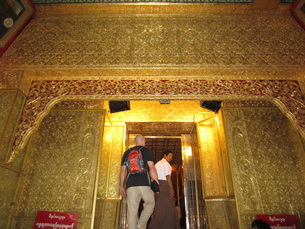
Walls of gold
Our next stop was the Botataung Pagoda which is known for housing ancient hair relics of Buddha that were brought to Myanmar from India more than 2,000 years ago. The entrance to the pagoda and the main temple area are spectacularly grand as they are covered in gold. The main temple area is sort of like a museum. It contains many ancient artifacts, including Buddha's hair, coins, and small Buddha statues. As we toured the pagoda, we ran into two monks who were as excited to take photos with us as we were to take photos with them. I was surprised by this because I had read that monks in Myanmar typically don't interact with people, and women are not allowed to approach them or touch them. The monks in Myanmar are all extremely skinny. Tony said it's because they stick to strict rules about eating only two very small meals a day, a rule which many other monks in countries such as Thailand don't necessarily abide to. There is a really cool tradition in Myanmar in which the monks walk through their villages or cities every morning at dawn with an empty bowl. As they pass homes and storefronts, people put food in the bowls. This food is usually all that the monks will eat for the day.
Outside the main pagoda area, there are several other buildings in the complex. Most of them contain smaller Buddha statues and Buddhist followers praying to them. However, one room surprised both me and Joe. We came across a room full of weaving looms and people busy at work weaving bright orange robes. Tony explained that these robes are created for the many Buddha statues around the country. Buddha's robes need to be changed constantly so they are in crisp shape. The weaving process was really hypnotizing to watch and the rhythm of the looms created quite a loud atmosphere in the "echoey" room. People sit on the machines and use their arms as well as feet to control the different levers that pull together the thread to create a beautiful garment.
Outside the main pagoda area, there are several other buildings in the complex. Most of them contain smaller Buddha statues and Buddhist followers praying to them. However, one room surprised both me and Joe. We came across a room full of weaving looms and people busy at work weaving bright orange robes. Tony explained that these robes are created for the many Buddha statues around the country. Buddha's robes need to be changed constantly so they are in crisp shape. The weaving process was really hypnotizing to watch and the rhythm of the looms created quite a loud atmosphere in the "echoey" room. People sit on the machines and use their arms as well as feet to control the different levers that pull together the thread to create a beautiful garment.
Wow, this blog posting is a lot longer than I thought it would be at this point because I'm only about halfway through our day of touring! I'll take a quick break here in an effort to keep my postings more on the short and readable side (I don't want you to be swamped with text!). Part two to come soon...
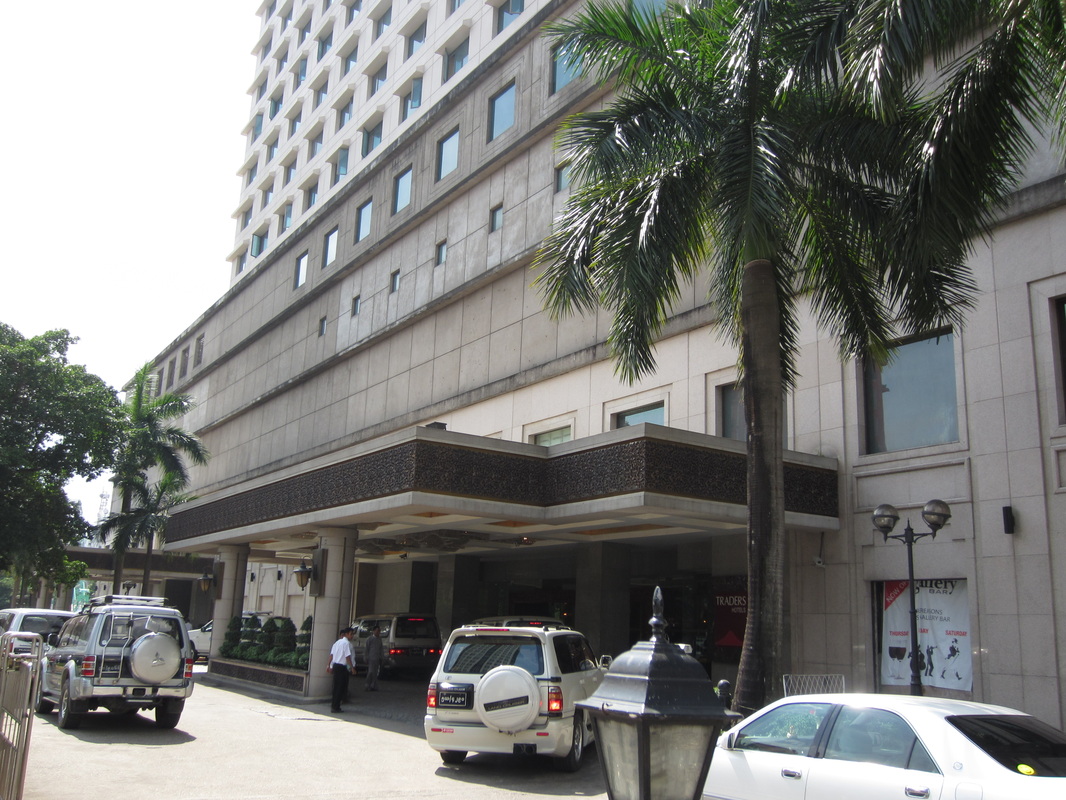
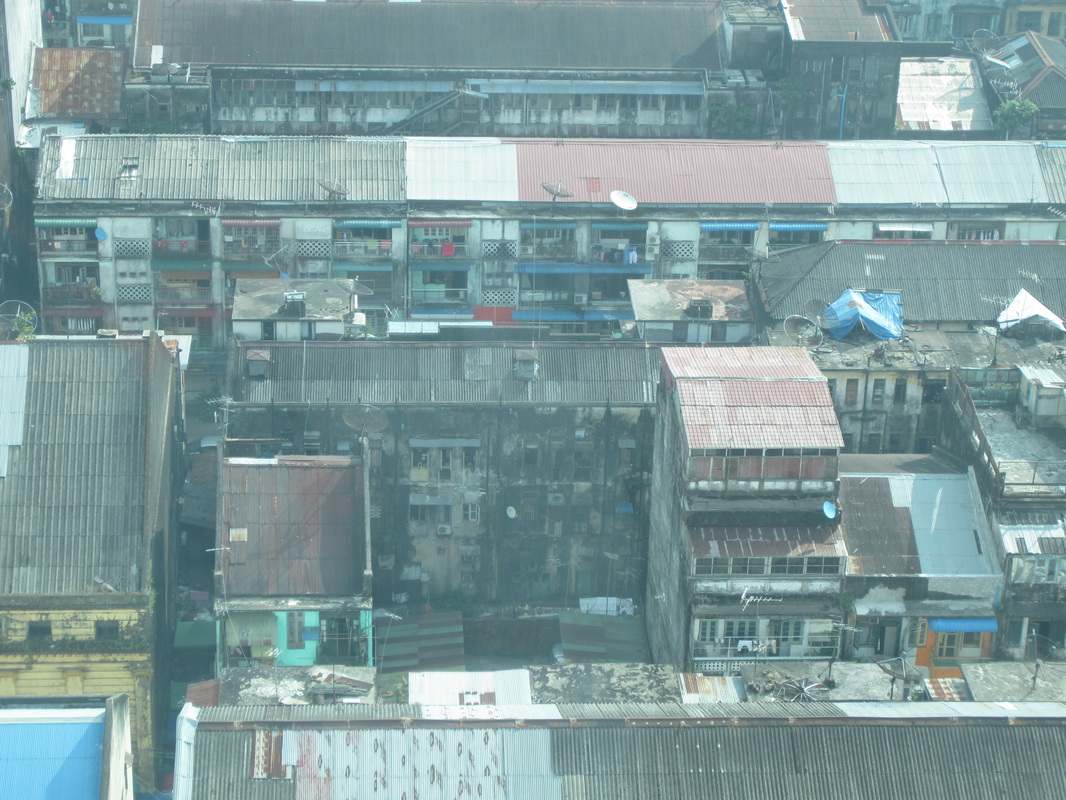
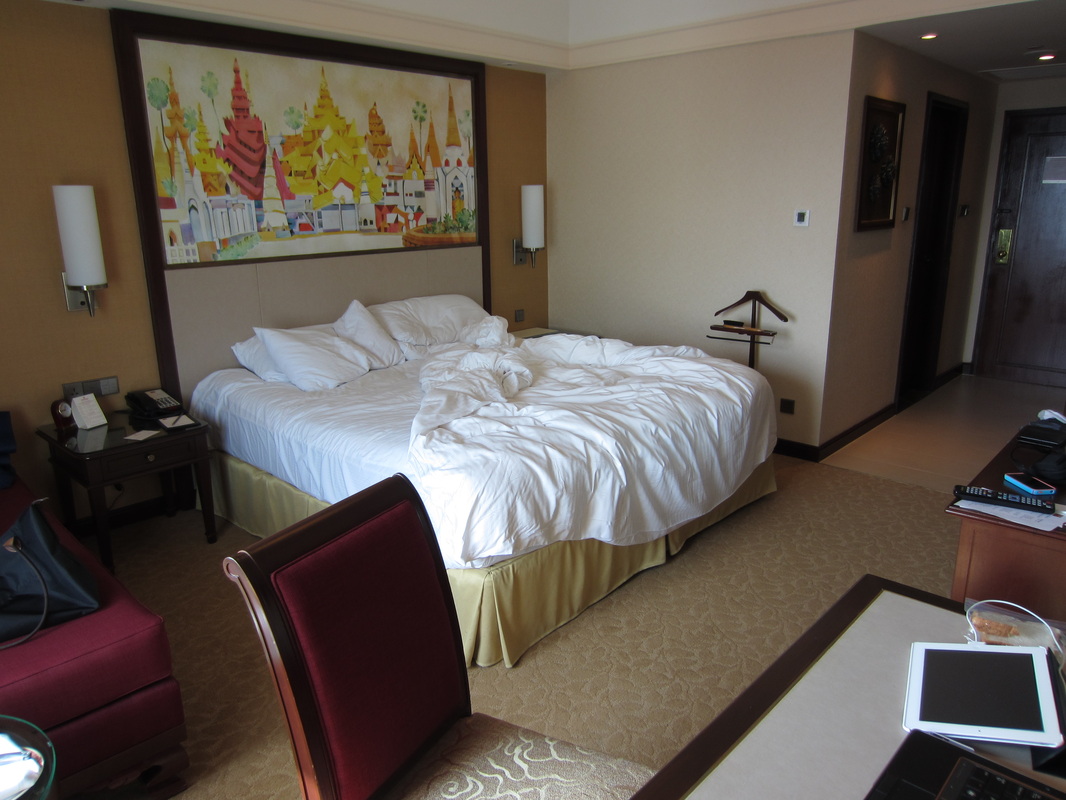
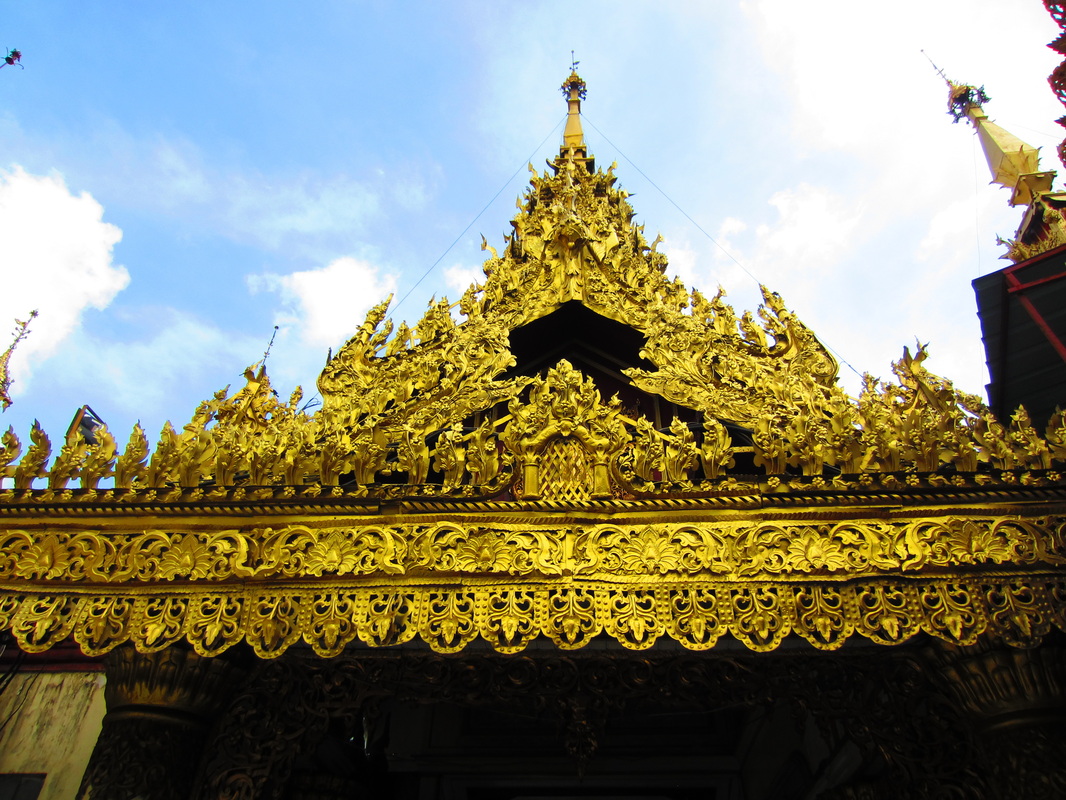
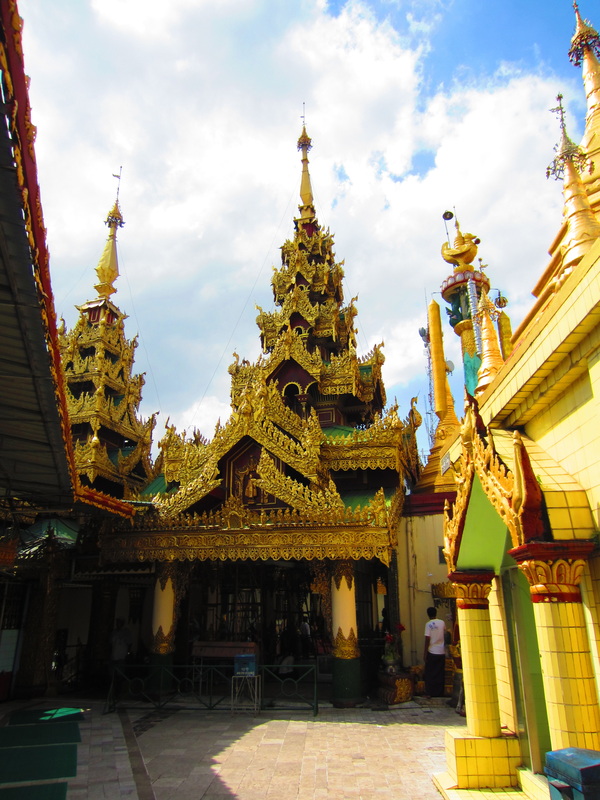
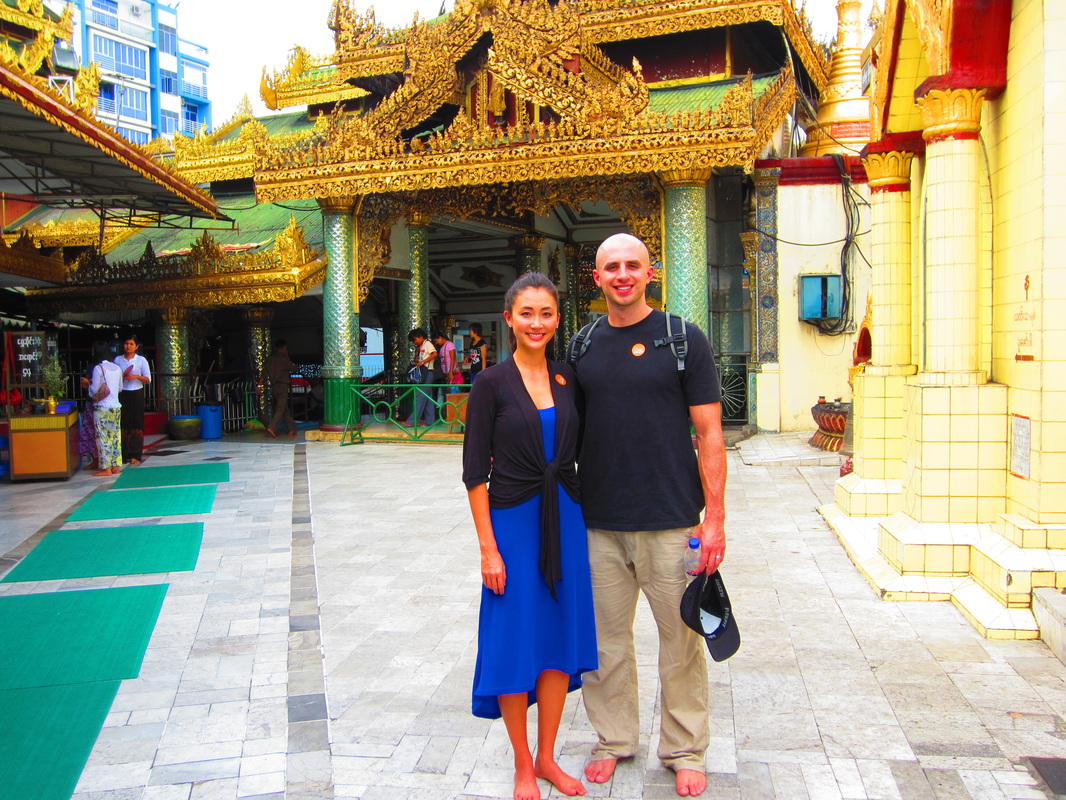
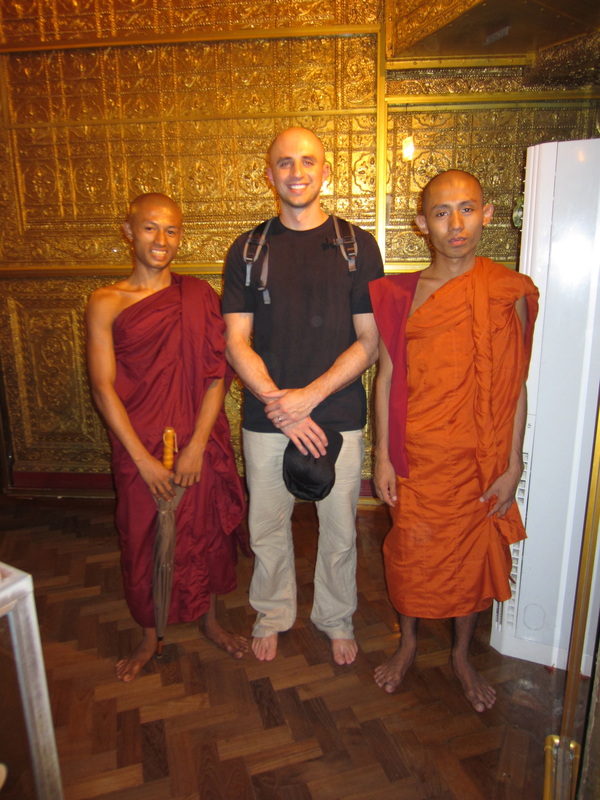
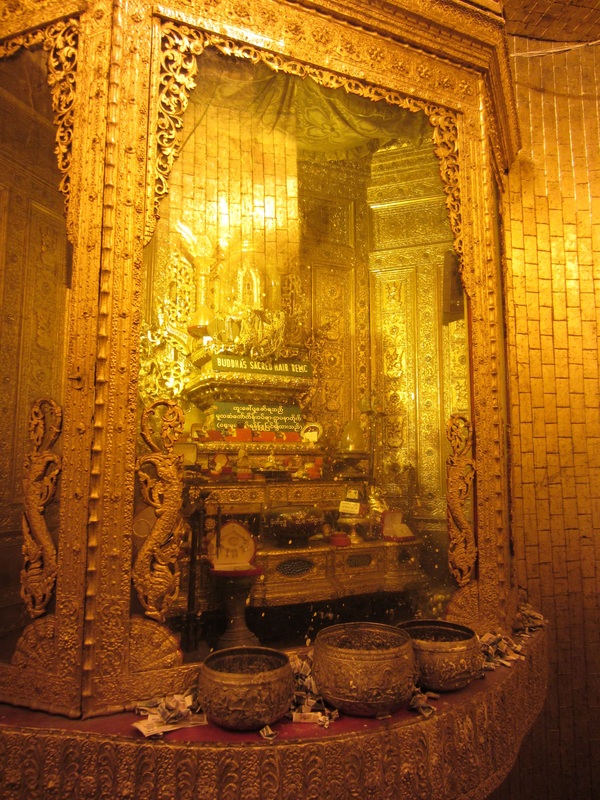

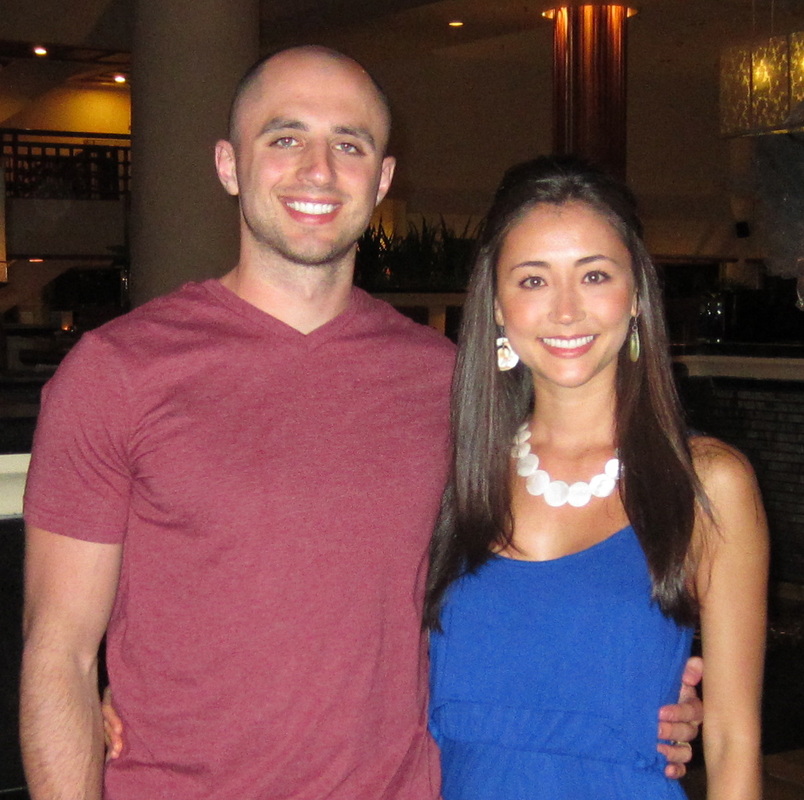
 RSS Feed
RSS Feed